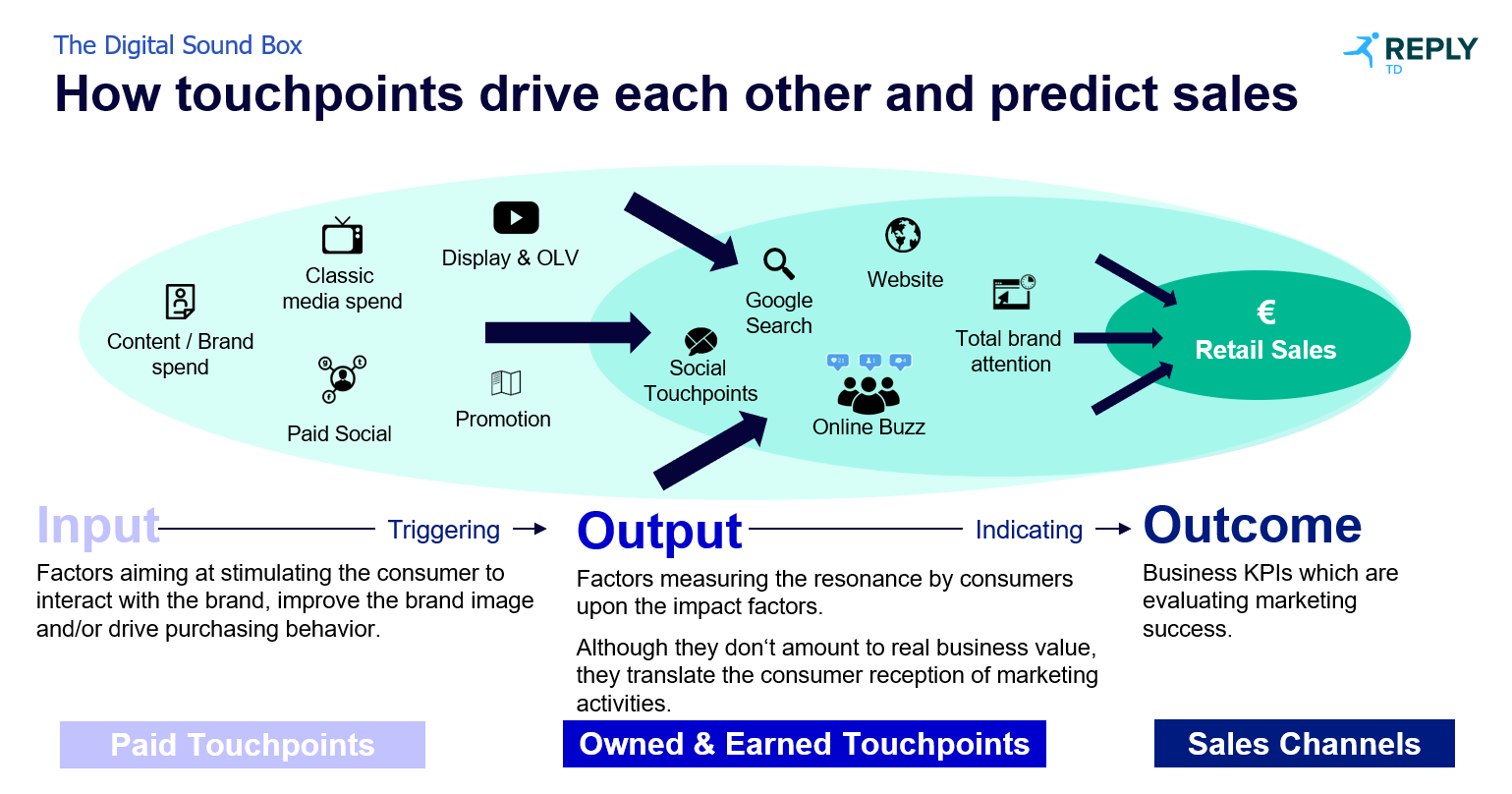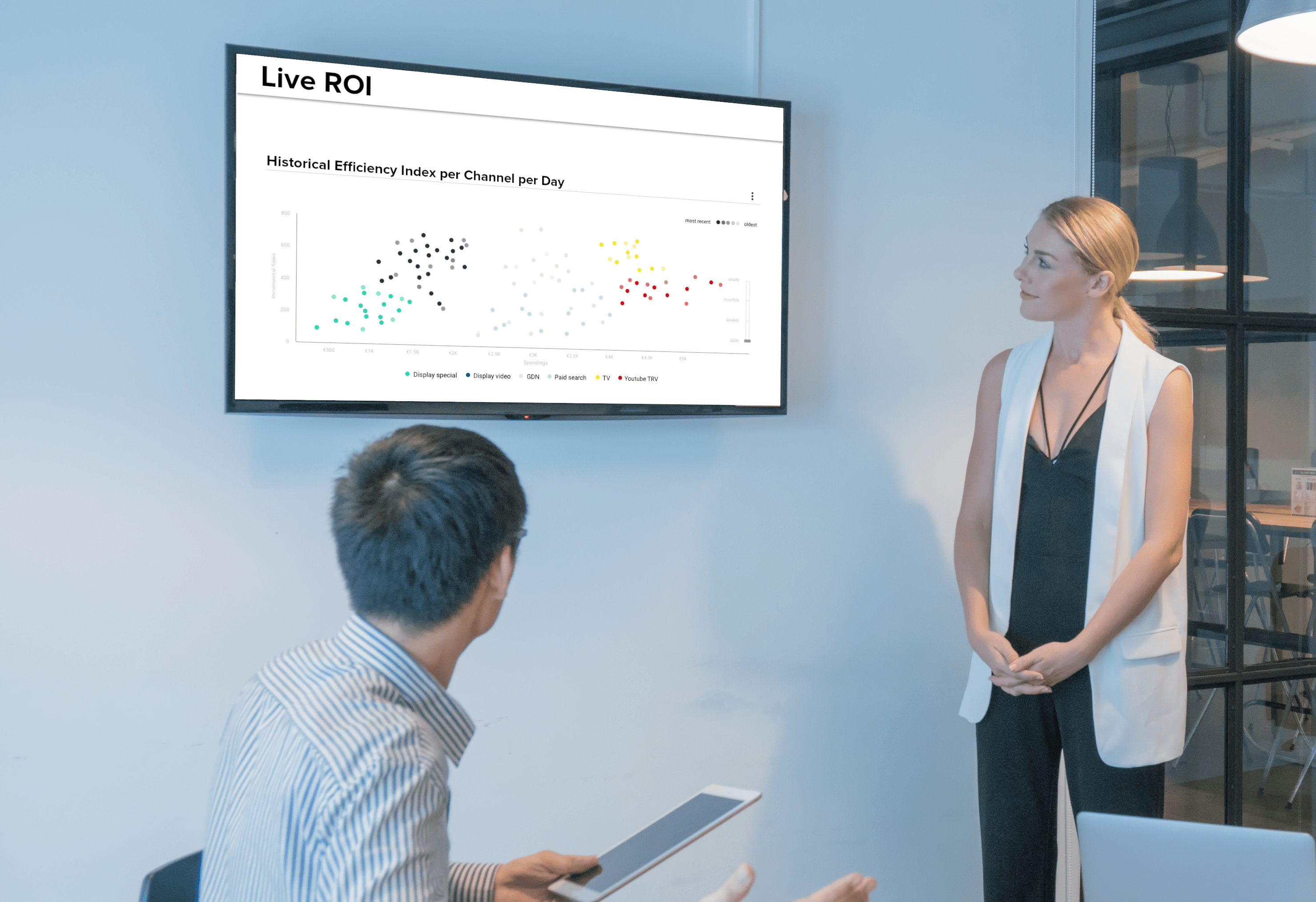This article was originally published in German in the 02/2020 edition of planung & analyse, a leading German market research publication. Click here to download the article [German].
Despite the Big Data hype, the marketing industry -made up largely of creatives and strategists- is surprisingly uncreative and often lacks strategy in its handling of digital data. When talking about digital data, the marketing industry mainly refers to tracking data used to review and optimise digital advertising spending. The potential of digital data to improve marketing effectiveness at the strategic level remains largely untouched.
However, winds are changing with the “Cookiecalypse” looming on the horizon. According to many industry experts, Google’s planned abolition of third-party cookies will significantly diminish performance marketing and tracking. In combination with increasingly strict data protection regulations, especially in Europe, the industry is being pressured to move away from gathering user-level data. Classical marketing theory and the role of brand perception will therefore become all the more important as an instrument for measuring advertising impact.
Measuring marketing effectiveness holistically
The forward-looking, exploratory, and strategic potential of digital data can be fully unearthed in this post-cookie era. This opens up new perspectives for campaign optimization, brand management and other strategic decision-making processes. Some innovative companies are already paving the way today, having successfully implemented many of these approaches.
One such approach is Marketing Effect Modelling, a hybrid approach that combines proven econometric methods and consumer behavior theories with modern data analytics and machine learning. This is the only customer-proven approach to date that allows marketing ROIs to be calculated and tracked by channels in real time. Using the same principles, it enables the calculation and continuous tracking of brand value from millions of online comments. But how does it work?
The web as a digital soundbox
Marketing Effect Modelling is based on the theoretical foundation of the ‘Digital Soundbox’ – which assumes that the boundaries between offline and online worlds have become blurred. Prior to the wide use of the internet, the real world was a closed space with actions and their effects remaining solely in that space. The arrival of the internet offered a connection to another space, the digital space, in which our activities reverberate in the form of digital data. Virtually everything we do in the real world today leaves digital traces, which can be measured and analyzed in order to gain new insights.

Take the COVID-19 crisis in Germany for example. In the initial phase, the behavior of the population was marked by fear and worry, which in turn was strongly reflected in Google search behavior. Unsurprisingly, the number of searches related to symptoms of COVID-19 increased sharply. As time went on however, the mood stabilized – people came to terms with the situation and wanted to make the most of the lockdowns across Europe. From then on, searches for prevention pathways, home office equipment and digital learning content increased.
Missing link between spendings and sales
Of course, Google searches are only one part of the digital data universe. Every type of digital output generated by consumers is part of the ‘Digital Soundbox,’ including online buzz (relevant comments and mentions on social media and other platforms), website visits, store visits and even tracking the number of call center calls.
In Marketing Effect Modelling, digital data (output) acts as a link between marketing expenditure (input) to sales and revenue (outcome). Where there was a gap once, there is now measurable data. Only the right algorithms are missing to evaluate this data in real time and get answers (see Figure 1).
Classic statistics paired with real-time metrics
So much for the theory. In practice, Marketing Effect Modelling consists of two components. The first component is regression analysis, which is also used in more traditional marketing mix models. In order for the statistics to lead to a clear overall result, it ideally needs at least two years of media and sales data. Regression analyses are already used to create reliable cross-channel marketing mix models, providing an average ROI per marketing measure. The problem however is that is only tracked retrospectively- in other words, they cannot determine the ROI in the here and now. In addition, these models are often cost-intensive, so in practice it may only be carried out once every two years. What happens in the two years between the last and the next analysis in that case remains a black box.
This is where the second component of Marketing Effect Modelling begins: real-time metrics. These are determined by a correlation analysis based on digital data that most accurately precedes the performance-critical business KPIs and has the highest explanation for sales. Often this includes Google searches and online buzz, which have been shown to have a significant statistical impact on sales.
Real-time metrics are continuously calculated and tracked on a daily basis against past averages to determine a “Live ROI” value for all campaigns across all channels (digital and non-digital). All the while, machine learning algorithms work in the background to produce the Live ROI score, which consists of both measured and of predicted values at a fifty-fifty split. The predicted values close the gaps in which the system is fed with updated sales data, which typically happens monthly in practice. The algorithms are trained with each update and thus become more accurate over time.
Dashboard as command deck
Dashboards play a central roll in making the Live ROI user-friendly. As data flows in the backend, all relevant key figures including the Live ROI are visualized on the front end. Marketing Effect Modelling requires a dashboard that is as flexible as possible and supports the connection of various internal and external data sources. That’s why we at TD Reply like to use our in-house dashboard solution called Pulse, which has the capability to support the integration of other dashboard solutions as well.

The dashboard serves as a control center for campaign managers from the corporate and agency side- measuring the effect of their marketing activities on channel, campaigns and even asset levels with the Live ROI at any time in real time; thus optimizing their media spending “on the fly”. For example, users can immediately see on the dashboard if a channel is under- or over-performing (see Graph 2), allowing investments to be reduced to underperforming channels and vice versa. This results in significant cost savings, removing blind intervals in which those responsible are unaware whether their campaigns are performing with the desired effects. A well-known customer was able to quadruple its video ROI within one year with the help of this control center effect. In the end, the healthy ROI and sales uplift was more than twenty percent.
Cross-channel, real-time tracking can also isolate the effect of individual campaigns and related actions while they are still running – solving one of the age-old mammoth problems in marketing, namely the relative inability to act during the active duration of the campaign, via the Digital Soundbox. At the same time, live ROI tracking immediately addresses an ex-post analysis and can be used to draw important lessons for future campaigns, even after the campaign ends: What worked well when, what didn’t, and why?
Dynamic brand control
By tracking online buzz, Marketing Effect Modelling also allows for determining the so-called ‘Digital Brand Equity.’ This enables medium- and long-term brand control in addition to the potential of Live ROI for short-term campaign optimizations.

Digital Brand Equity is an associative approach to determining brand value, inspired by behavioral scientist Jennifer Aaker’s brand-personality model. A set of brand personality attributes such as “reliable” or “safe” is first defined, according to Aaker, then online buzz is analyzed using algorithms to determine which personality attributes are particularly pronounced in the brand.
The algorithm calculates this by focusing on the semantics and tonality in the comments and measuring the “fit” with the predefined personality attributes. Depending on the brand and campaign, up to several million comments could be analyzed in this way. The Pulse dashboard’s visualization capabilities then create a brand association wheel that paints a clear picture of consumers’ perception of the brand value (see Chart 3). Similar to Live ROI, Digital Brand Equity can be continuously tracked to see how individual measures affect brand value, which gives marketers a strong starting point for long-term brand management as well as better brand positioning.
Time for a reset
In tandem, these characteristics ultimately create new levers for the holistic control of marketing effectiveness Their hybrid character makes it possible: they combine classic marketing theory with the latest data technologies.
Unfortunately, the mainstream marketing industry is taking a different approach to digital data. A quick glance at job advertisements for digital marketer is enough to convince yourself; they often only ask for tool skills instead of theoretical knowledge.
Today, with the end of cookies on the horizon and the ever-accelerating speed of business, the time has come to rethink the fundamentals. Put boldly, Alan Murray, CEO of Fortune Media has claimed: “The crisis does not require companies to restart, but to reset.”
BACK TO ALL ARTICLES
